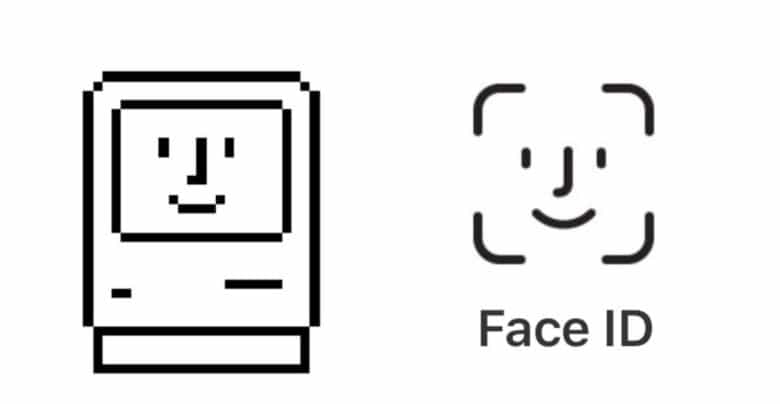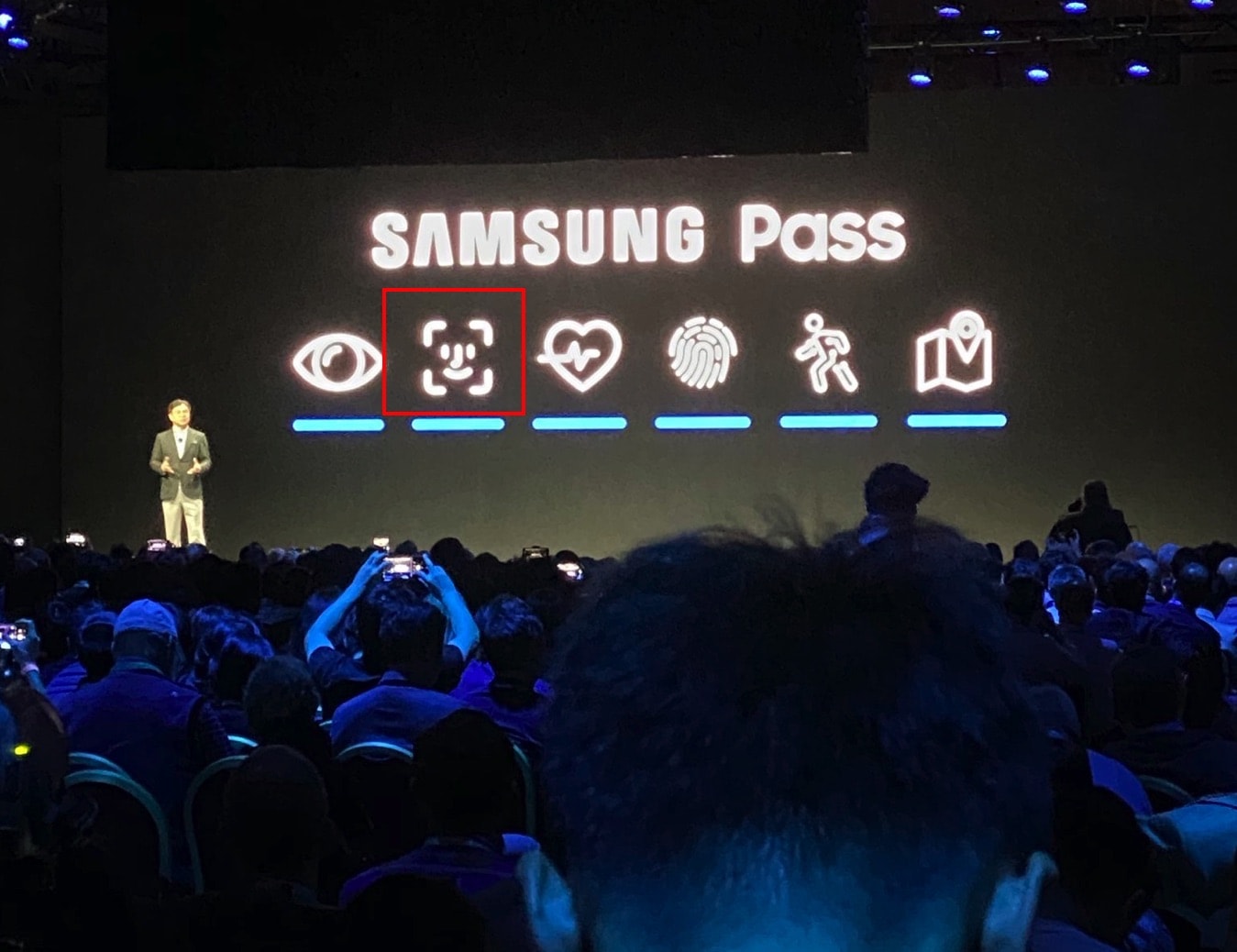Eagle-eyed viewers spotted something oddly familiar during Samsung’s CES keynote Monday. On a slide regarding Samsung Pass, its new biometric “identity management as-a-service” product, Samsung included a logo that looks (to be polite) “borrowed” from Apple’s Face ID.
Yes, this not-quite-identical logo is the latest chapter in Samsung being, err, inspired by Apple designs. But should Apple be firing up its on-call lawyers for an easy win over Samsung? Legally speaking, things might be a bit more complicated than they initially seem.
On paper, Apple’s in a good position. It clearly used the Face ID logo itself long before Samsung did. Face ID only debuted in 2017 with the iPhone X. But the icon nods back to the original Macintosh logo from the 1980s, complete with smiley face.
Apple has successfully registered the Face ID logo in many places around the world. In other words, it’s as protected as it can be, right? Well, not necessarily when lawyered-up companies with deep pockets are concerned.

Photo: Apple
To borrow Face ID icon or not to borrow?
“In terms of copyright, the threshold for protection for user interface metaphors – such as using a trashcan to signify deletion – is quite high,” Anna Ronkainen, an intellectual property scholar at the University of Helsinki, told Cult of Mac.
Apple has had painful experience of this in the past. In the 1990s, it battled Microsoft and HP in court on the subject of copyright infringement. Many of Apple’s claims were thrown out.
If Apple chooses to defend its trademark in this latest instance, Ronkainen thinks Samsung could make an argument about the transparent nature of the icon. That means arguing that the average consumer will associate the icon with generic biometric login via facial recognition.
Samsung straight up stole the Face ID icon pic.twitter.com/ifGcIDxIlb
— Parker Ortolani @ CES (@ParkerOrtolani) January 7, 2020
For a lawsuit to be cut-and-dried, the icon would have to make people assume it referred to Apple’s patented Face ID technology.
Samsung could argue that the trademark should never have been granted in the first place. If that’s the case, Ronkainen said, “off to the courts we go.” Literally. “The outcome is impossible to predict at this point.” Impossible, that is, other than the high probability that it would involve years more Apple vs. Samsung battling in court.
Could this be good for users?
While Samsung’s design inspirationmight be a bit suspect, Ronkainen also points out that the similarity may ultimately not be a bad thing for your average user.
“In the grand scheme of things, a high bar for monopolies on such UI elements is a good thing,” she said. “That’s because it makes things a lot easier for anybody who moves between devices and applications from different providers.”
Sure, it may be a bit sneaky on Samsung’s part. But the idea of having to memorize multiple different symbols for the same function is annoying. In an age of “it just works,” that would be a negative for users.
As much as we would like for Samsung’s icon designers to have to be a bit more original in their designs.
Via: iMore


